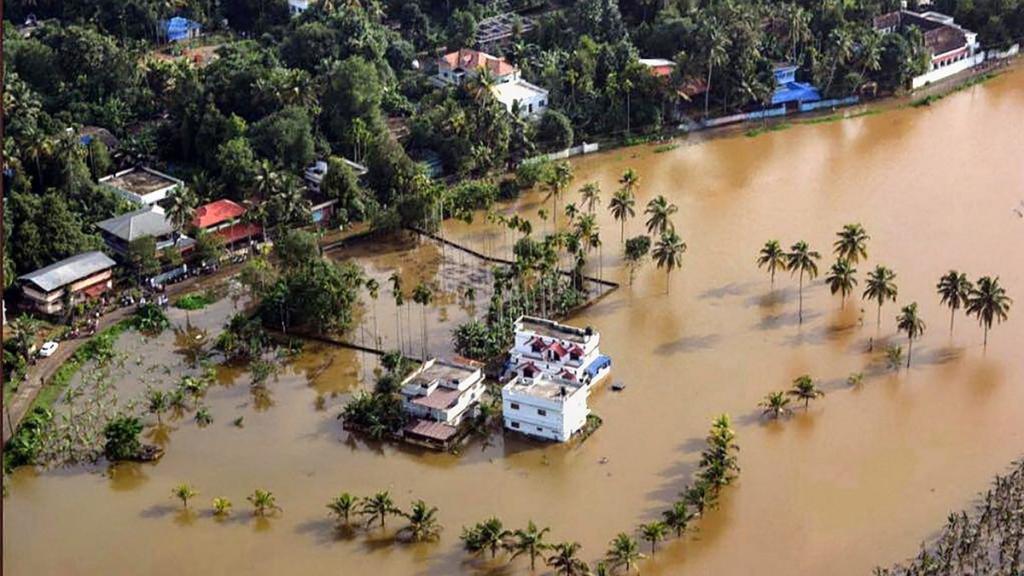
Adaptation and Mitigation Strategies in Human Migration Due to Climate Change
Climate change is currently one of the most discussed cases in various conference forums because this phenomenon can be a threat to the sustainability of life on Earth. Climate change occurs because human activity has been the main driver since the 1800s, especially due to the burning of fossil fuels, such as coal, oil, and gas (Suryani, 2018).
This phenomenon affects many fields, including health, infrastructure, agriculture, marine, and geographical conditions that have been disrupted and even significantly damaged. This condition can no longer be denied by the community because climate change can already be felt today, such as erratic weather, increasingly hot temperatures, and frequent hydrometeorological disasters that have become evidence that climate change does exist.
The South Asian region is one of the areas that is vulnerable and very vulnerable due to climate change. According to predictions from the Intergovernmental Panel on Climate Change (IPCC), the level of climate change in this region will be higher than the average of other regions (IPCC Reports, 2022).
This is due to several factors including the density of the population resulting in increased community activities where these activities can increase the emission of gases that contribute to climate change. In addition, the geographical conditions in this region, namely the geography of South Asia directly bordering the Himalayas in the North and East and the Indian Ocean in the South, make this geography vulnerable to climate change.
Due to climate change, the phenomenon of population migration has increased but is often ignored in international forums because international forums focus on and consider climate change only related to environmental changes. This phenomenon can disrupt and have an impact in all fields including the field of migration.
Reporting from Safitri and friends (2020) that climate change will also have an impact on rights related to livelihoods and culture, namely migration and transmigration, as well as personal security and safety. According to the Internal Displacement Monitoring Center (IDMC) report, more than 30 million people have been displaced in South Asia, due to disasters resulting from climate change including storms, floods, forest fires, and droughts which resulted in the displacement of 2.5 million people and the destruction of 55,500 homes and 10% of refugees have become homeless (IDMC Reports, 2020).
In addition to natural disasters, it can be seen from several cases concerning the field of geography that climate change is causing sea levels to rise and changing the livelihoods of coastal communities. Where coastal communities usually live from ponds now have to look for other ways or new professions because the pond land is lost due to seawater. Coastal communities are faced with two choices including changing livelihoods or moving places to find a better life.
People whose livelihoods are farmers also experience the same thing due to climate change. Seen in the case of farmers where many experienced crop failure due to dry soil and farmers are confused in determining when to plant and what suitable varieties to plant in a planting period. As a result, farmers have to choose between changing their livelihoods or migrating to find a better life.
To cope with the impacts of climate change, adaptation and mitigation strategies are needed to deal with and reduce environmental damage. In dealing with the challenge of human migration, there are inevitably barriers that hinder the effectiveness of both strategies. One of the main obstacles is that most mitigation efforts involve the migration of people to new areas, which is often not well received by the residents or government of the new area and inevitably leads to social conflicts and tensions.
As an essayist who has researched various cases, I feel concerned about the plight of people who are forced to migrate to avoid the impacts of climate change, only to find themselves rejected in the new place where they were expected to find refuge and shelter. The problem becomes more complicated when migrants are unable to find new jobs in their new areas.
Local regulations governing labor rights and access to resources often prevent migrants from fully integrating into new communities. In these situations, migrants are often marginalized and forced to live in poverty and vulnerability. So, I felt challenged to find creative and lasting solutions. One of the solutions I considered was to repatriate migrants to their areas of origin while creating alternative housing and new sources of income.
An interesting idea I came up with was to build buildings or infrastructure underground. Not only can this idea provide a safe and secure place to live for returning residents, but it can also be a sustainable solution to climate change. The infrastructure involves building dwellings, multi-story farms, and public facilities underground to utilize the available space more efficiently.
Research on this innovation has been carried out by researchers from various universities around the world, especially for the purposes that will be carried out in the future, both from the type of research and the theory used and the research method techniques used, where the author has summarized several previous studies, namely a study entitled “Urban Underground Space: Solving the Problems of Today’s Cities” by Wout Broere, published in 2016. Where this study considers the use of space below the surface in the context of a dense metropolis.
Broere is looking at opportunities to develop homes and public facilities underground as a solution to space constraints in dense urban centers. With his work, he provides a new perspective on how to maximize space utilization in a limited city by making optimal use of underground space.
The research shows the possibility of utilizing underground housing and infrastructure as a solution to environmental problems and limited land in cities. Experts also suggest that by using underground space, we can create an eco-friendly and energy-efficient living environment. Overall, the use of below-ground areas is a creative act in urban development that is environmentally friendly and capable of providing positive benefits to the surrounding environment.
In addition, underground infrastructure development can also create new job opportunities and boost economic growth in the areas where migrants come from. By involving local people in the development process and providing training to improve their skills, communities can create sustainable and inclusive neighborhoods in areas affected by climate change.
However, implementing this concept is not simple. Close cooperation is needed between governments, non-governmental organizations, and the business sector to plan and implement these underground infrastructure development projects. Significant investment in research and technology development is needed to enable safe and environmentally friendly underground development. By building underground infrastructure, we can provide hope and solutions for migrants, and create a more sustainable future for generations to come.
By: Ravydo Anggara Jufri
Write and Win: Participate in Creative writing Contest & International Essay Contest and win fabulous prizes.


